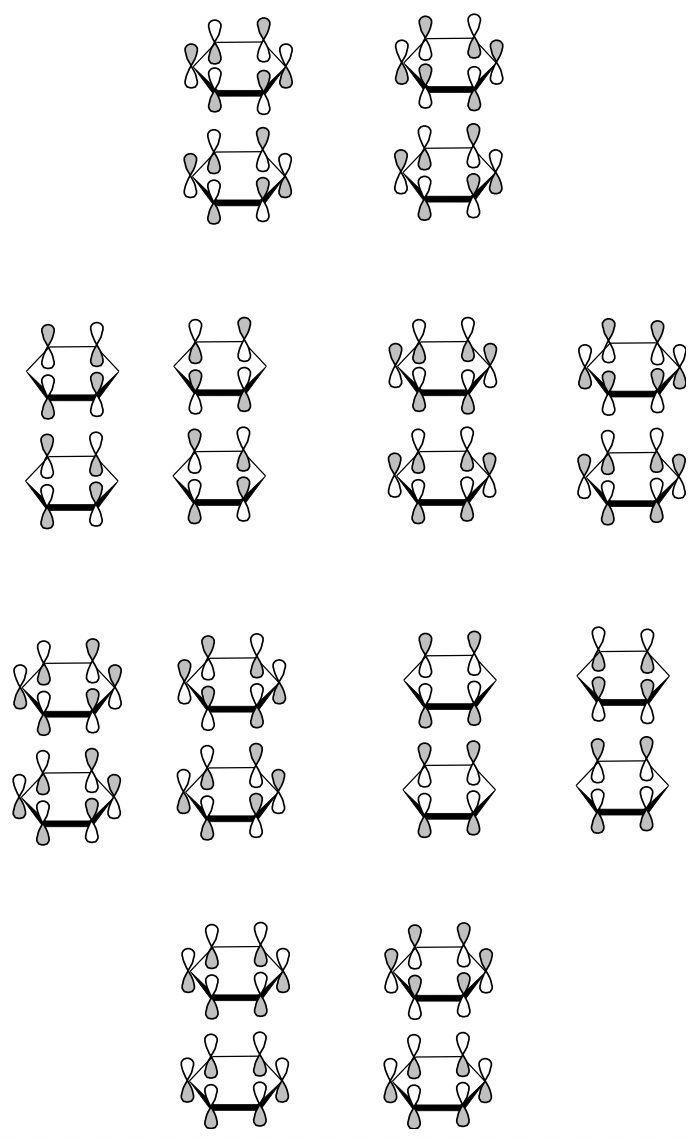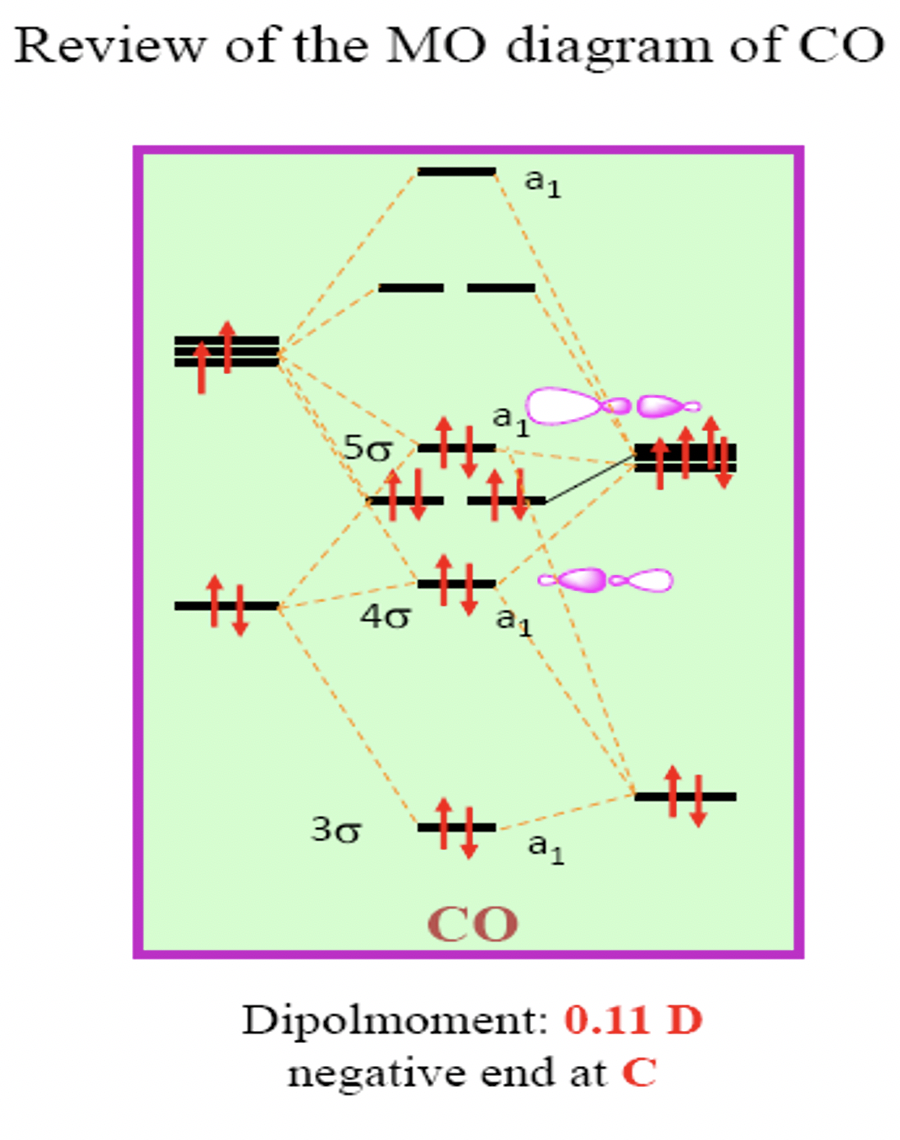Problemas con la tarea Capítulo 10
- Page ID
- 70080
Problemas con la tarea
Sección 1
Ejercicio 1
Predecir la carga n de cobaltoceno (Co (Cp) 2) n. CP=Ciclopentadienilo. Explique brevemente.
- Contestar
-
+1, porque se cumple la regla de 18 electrones.
Ejercicio 2
Bis-benceno cromo (4 -C 6 H 6) Cr es un compuesto sándwich que tiene dos anillos de benceno paralelos en una conformación eclipsada. Esbozar los orbitales del grupo de ligandos para esta molécula.
- Contestar
-

Sección 2
Ejercicio 1
El diagrama MO de la molécula de CO se da a continuación. Identificar los orbitales moleculares que pueden actuar
a) Como donantes sigma
b) Aceptores PI en carbonilo.

- Contestar
-
a) 5 σ, 4 σ, uniendo orbitales π
b) orbitales π antienlace
Ejercicio 2
¿Cuál carbonilo probablemente exhibirá la frecuencia más alta para la vibración de estiramiento C-O? Dé una breve explicación de su decisión.
a) V (CO) 6 -
b) Cr (CO) 6
c) Mn (CO) 6 +
- Contestar
-
c) Mn (CO) 6 +
Los cationes carbonilo tienen la unión posterior pi-más débil, por lo tanto, el orden de unión para el enlace C-O es el más alto y por lo tanto la frecuencia de la vibración de estiramiento C-O es la más alta.
Ejercicio 3
Predecir la carga correcta del pentacarbonilo más estable de
a) Hierro
b) Mn
c) Cr
- Contestar
-
a) 0
b) 1-
c) 2-
Sección 3
Ejercicio 1
¿Qué estructura esperaría de un carbonilo hecho de los siguientes fragmentos según el concepto de isolobalidad? Predecir si la estructura probablemente sería estable.
a) Cr (CO) 5 +
b) Cr (CO) 4 -
c) Mn (CO) 4 -
- Contestar
-
a) 15VE -> racimo tetraédrico (no estable b/c CN demasiado alto)
b) 15 VE -> cúmulo tetraédrico (no estable b/c CN demasiado alto)
c) 16 VE -> trímero (estable b/c CN = 6, carga no demasiado alta).
Ejercicio 2
¿Cuáles de los siguientes fragmentos son isolobales al fragmento CH 2?
a) NH 2
b) NH
c) OH
d) Fe (CO) 3
e) Co (CO) 4 +
- Contestar
-
b) NH
Ejercicio 3
¿Cuáles de los siguientes fragmentos son isolobales al fragmento Mn (CO) 5?
a) CH 3
b) CH 2 CH 3
c) OH
d) F
e) NH
- Contestar
-
a) CH 3
b) CH 2 CH 3
c) OH
d) F

